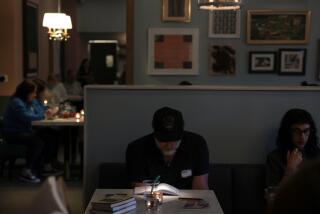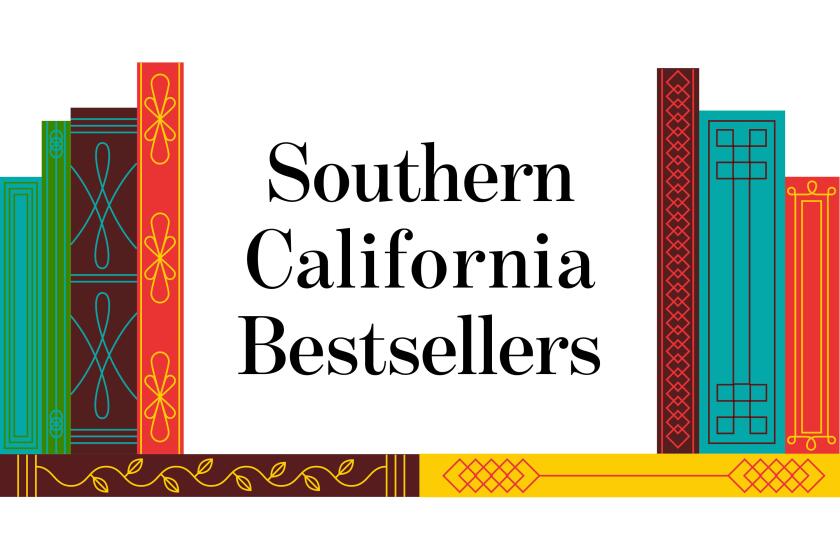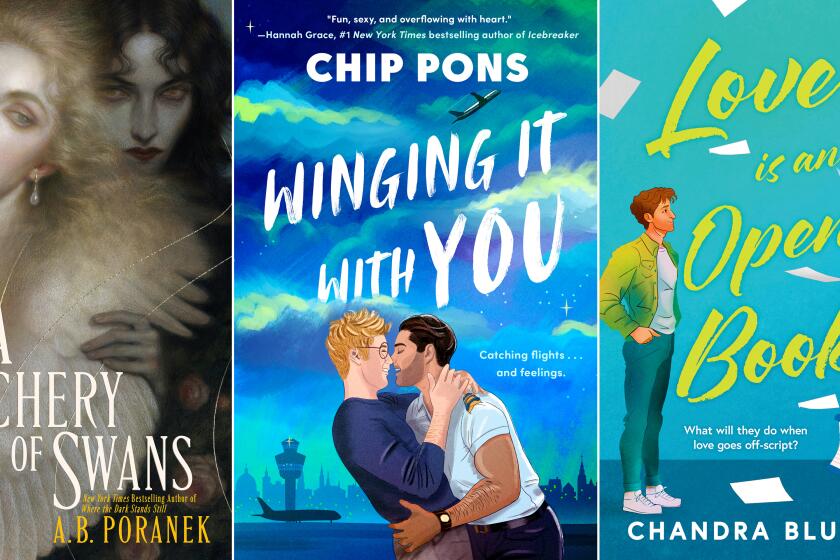READING TIPS AND NOTES / INSIGHTS FROM THE CLASSROOM
- Share via
The act of reading occurs in time. That is, as your eyes scan this line of print, a number of seconds have transpired. How many seconds depends largely upon your familiarity with the vocabulary and with your deep knowledge of the kind of text you have before you.
You are able to skip lightly and quickly down this column of type because you understand how newspaper stories work. When something untoward appears, something that doesn’t make sense or seems out of context, you send your eyes back to check the strange information that has just been sent to your brain.
In a novel, particularly a complex one, such checking does not always clear up the problem right away. Writers of fiction often set out to puzzle their readers, confident that if you are intrigued enough by the story, you will keep turning the pages to find out more. In fact, most authors covet the term “a page-turner” for their book jackets.
Experienced readers of fiction engage in what Margaret Mackey from the University of Alberta calls “good-enough reading.”
She defines this as the ability to strike a personal balance between the need for momentum and the need for accountability to the text.
I was struck by this definition because I know that I often urge my students to do such good-enough reading, particularly for the first 30 pages or 30 minutes. What happens in this interval is that the reader proceeds with less than complete information. Sometimes the relationships among the characters seem to make no sense.
Other times, the fictional world is so foreign to the reader that simply exploring the terrain requires a chapter or two. In science fiction novels, just getting a fix on the species narrating the story can sometimes be a challenge. Experienced readers learn to forge ahead, confident that the writer won’t lead them astray.
Have they missed or misunderstood some important information? Probably. But the absence of these details doesn’t block the readers’ progress.
When applied to a history or science textbook, though, good-enough reading can be a disaster. Students who float along through the first three chapters of their economics book, hoping it will magically make sense later, are sadly deluded. Each page, each piece of information, is important to register and store.
Different kinds of texts require different kinds of reading strategies. And it is essential that children learn both how to read for information and how to read for pleasure. As someone who has learned most of what I know about the world from fiction, I don’t think the two reading purposes are at odds.
“Uncle Tom’s Cabin” and “Gone With the Wind” taught me as much about the causes of the Civil War as any United States history textbook. Sometimes good-enough reading is more than good enough. Sometimes it’s the best way to read.
BOOK EVENTS
* Monday in West Los Angeles: Pulitzer Prize-winning cartoonist Jules Feiffer tells stories and autographs books at Children’s Book World, 10580 1/2 West Pico Blvd., 4 p.m. (310) 559-2665.
* Monday in Venice: Preschool children’s story hour, Venice-Abbot Kinney Memorial branch library, 501 S. Venice Blvd., 7 p.m. (310) 821-1769.
* Tuesday in the Wilshire area: Storytime for ages 4 to 11, Wilshire branch library, 149 N. St. Andrews Place, 4 p.m. (323) 957-4550.
More to Read
Sign up for our Book Club newsletter
Get the latest news, events and more from the Los Angeles Times Book Club, and help us get L.A. reading and talking.
You may occasionally receive promotional content from the Los Angeles Times.










